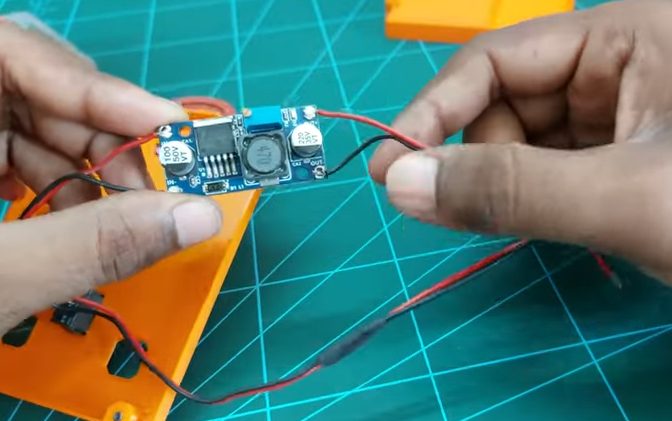Pico Hash - Mini Humanoid Robot
by hashrobotics2020 in Circuits > Robots
8375 Views, 48 Favorites, 0 Comments
Pico Hash - Mini Humanoid Robot

Hello everyone, this is a mini humanoid robot, Pico Hash. It uses a Raspberry Pi Pico module as the brain of the robot.
The main objective of this build is to prove that robots can easily be made in very low cost using some basic to little advance instruments, machinery etc. Our goal is to make a dully functional humanoid robot in future at the cheapest price possible. In future robots will be a part of our day to day life. So this type of builds will help us creating an ecosystem of Robotics in our country.
Supplies
- 3D printed parts
- Raspberry Pi Pico
- MG995 servo motor X8
- SG90 Micro Servo
- PCA9685 servo drive
- 1.3 Inch 128×64 OLED Display
- LM2695 DC-DC buck converter
- 12V battery
- M3 * 10MM screws
- Jumper wires
- Header pins
- PCB board
3D Printed Parts

I have used 3D Printed parts each part of the robot. I chosen orange and grey color for the robot. I have printed all the parts in Ender 3 V2 3D Printer. Using the basic Cura setting I have printed all the parts in 20% infill (0.2 mm nozzle). For better look you can smoothed the 3D Printed parts using sand paper.
Hand and Leg Assembly



First assemble the legs using the 3D printed parts with the servo motors and set the initial positions of the servo accordingly. Using some M3 screws assemble servo horns to the leg and eventually the hand in the same manner. Make sure to correct the servo angles to make the robot stand straight and steady.
Assembling the Body


Similarly assemble the servos to the main body in the same manner as earlier. Make sure to tighten the servo to the 3D printed parts properly.
Whole Body Structure Assembly



After assembling the hands, legs and the main body, its time to assemble each part together. For this we are using custom made 3D Printed servo horns for smooth movement of the robot.
Servo Initial Position


Set the initial servo positions of the robot according to the diagram.
You can use the following circuit to set the servo angles each time.
Circuit Diagram

Following the diagram you can make all the connections.
Attach the OLED Display to the Head



Now attach the OLED display to the 3D printed head and connect it to the Pico module.
Add the PCB Board to the 3D Printed Robot Body





We have created a PCB to connect the Pico module and the servo driver. Attach the PCB to the 3D printed part using M3 screws and connect the servo driver to the Pico using 4 jumpers.
Connect the Servos to the PCA9685 Servo Driver

Then connect all the servo to the servo driver according to the circuit diagram.
Connect the Switch and the Buck Converted Module


Add a switch at the back of the robot and connect a buck converted to the power input pin. Make sure the set the voltage to 5V.
Organize the Cables and Cover the Back


Now for better look organize the cable with some zip ties and cover the back.
Coding

Facial OLED Animations

We need to extract the code for these Facial expression (JPEG or PNG). Then we need to add these facial expression in the coding part. For detail do check out the video linked below.
Detailed Video of Building the Robo


These videos will show how I build the robot and showed its working.
Working Demo

This is just the demo how the robot actually works. This video has all the possible moves that the the robot can perform.